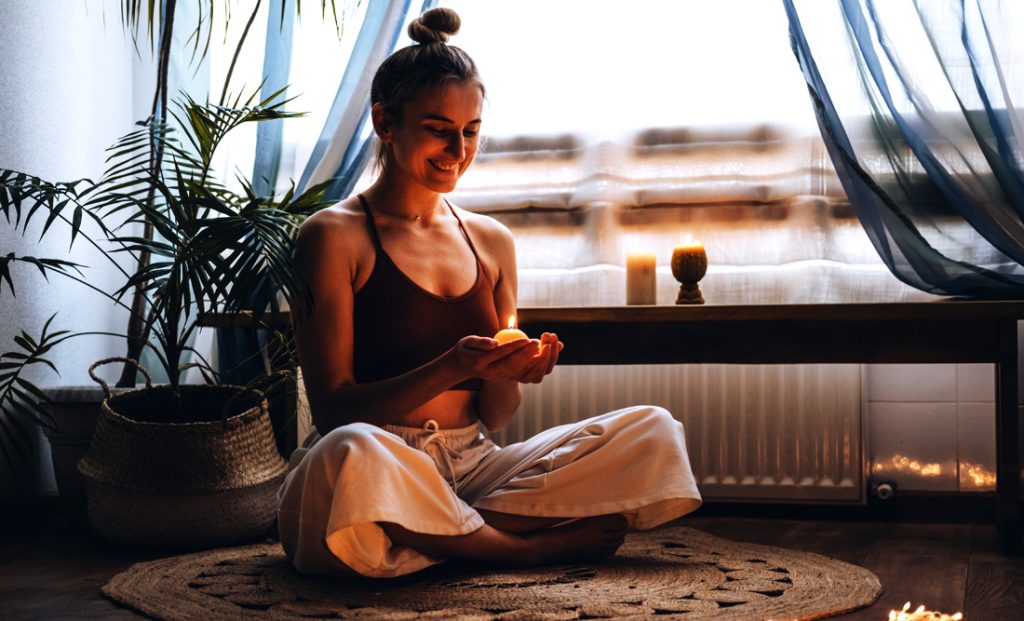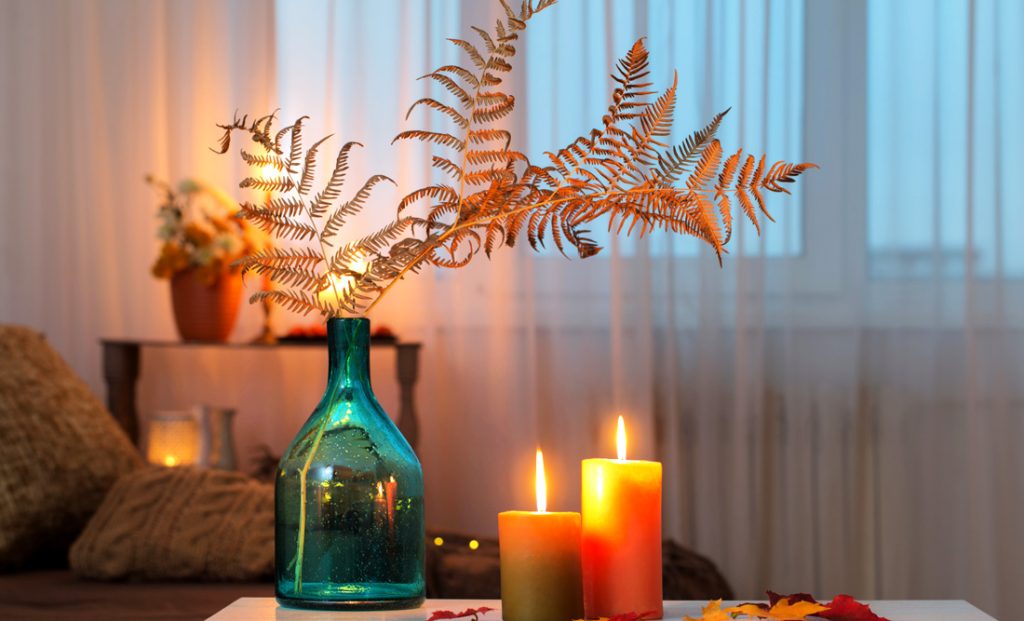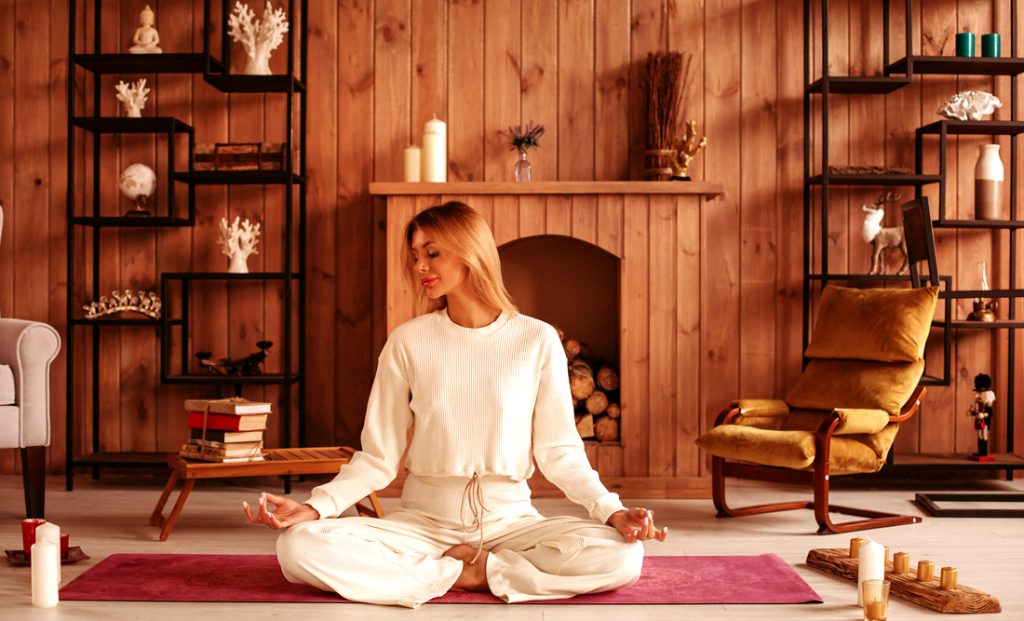Last Updated on August 22, 2024 by Avia
When people talk about spiritual spaces, this is often directed toward environments in the community. Temples, ancient architecture, churches, and stone circles are common places that spring to mind. Yet, it is important to understand that some of the most powerful spaces are those that you can utilize in the privacy and peace of your own home. With that in mind, we’ve consulted the experts on how to create a spiritual space in your home.
Making space for your spiritual practice at home isn’t just a matter of convenience. There is also the opportunity to establish a deeper personal connection to the rituals and traditions you find meaningful. Not to mention, you aren’t having to compromise on elements designed to support a wider range of users.
Knowing how to do this effectively can be challenging. So, we’re going to explore how to create a spiritual space in your home that is ideal, effective, energetic, and perfect for your needs.
Table of Contents

Decorating Intentionally
The approach you take to your home’s interior design can be more than an expression of function or style. There is also evidence supporting the potential for decor choices to impact mental wellness. In some instances, this can be due to practical components, like improving organization to reduce stress. In others, the shapes and colors can contribute to psychological or spiritual components, such as self-esteem and a sense of peace.
Therefore, when you’re creating a spiritual space you need to decorate intentionally. You need to be certain that the elements you include aren’t going to have negative connotations or be disruptive to your energy flow. Wherever possible, everything you select for the space should be considered for the role it plays in your spiritual wellness. This should obviously apply to actively spiritual items but you should also be mindful of the passive decor aspects in the area.
It can be worth taking a formal approach to this. Sit down and consider what you want the space to represent to you. Write down the feelings you want to evoke and the activities you need to perform. You can then outline the paint or furnishing hues that best serve these elements.
Supporting Your Rituals
Many people’s spiritual practices involve either loose or formal rituals. These don’t necessarily have to be religious in nature. Yours might revolve around a daily moment of mindfulness or directing gratitude toward spiritual guides. Whatever your priorities are, it can be helpful to ensure the design of your spiritual space best supports your rituals.
This may be as simple as designing a layout that gives you room to maneuver your body freely. The last thing you want is for your yoga practice or labyrinth meditation to be disrupted because you knock into the furniture. It may also be the case that you need to create a spatial arrangement that provides the right size and positioning for an altar or object of focus. Your decisions here may be intuitive, directed by where in the room feels the most positive or peaceful. Often, the best place for an altar is where it feels most natural to place it.
Another component of supporting your rituals can involve the positioning of the light in the room. If your traditions suggest that you need to pray or meditate in a certain direction, it’s worth positioning your furniture and decorations to enable this. If your tradition involves rituals focused on the moon, sun, or other astronomical bodies, it may be wise to make your space choices around where you have good window access to experience these. You might even find it practical to arrange the installation of a skylight that can improve your access to these natural light givers.

Considering Atmospheric Factors
It’s important to remember that the decorative and design elements aren’t the only contributing components of a functioning spiritual space. The atmosphere of the area also plays a significant role in how effectively you can maintain your spiritual practice. It’s worth taking the time to arrange your space in a way that minimizes disruptive components and emphasizes positive vibes.
A significant aspect for consideration here is sound. Many forms of meditation, prayer, and spiritual focus are more effective when there is limited intrusive noise. Therefore, if you live in a busy city area, it may be best to employ forms of noise reduction, such as installing sound-absorbing foam panels on walls and ceilings. However, if your practice benefits from the presence of birdsong or other natural sounds, you might consider creating your spiritual space in a garden, gazebo, or balcony area.
It’s also important to understand how temperature can play a role in your spiritual routines. If you find the heat too stifling or the breeze too cold, this can disrupt your spiritual focus and your motivation. There are various technological and natural methods you can use to control the temperature in your home space. Certainly, a well-maintained heating, ventilation, and air conditioning (HVAC) system can ensure you can keep a consistent climate. However, planting shrubs or trees outside windows can also provide cooling shade in the summer months. It’s worth checking your window seals to make certain no drafts are making their way in.

Personalizing the Space
When designing a spiritual space for your home, it can be easy to get caught up in trying to respect the traditional components. Yet, spirituality of any kind is a deeply personal experience. It’s important that, alongside the tools of your rituals and traditions, you make certain that the space you’re creating is representative of you and how your personality fits into your spiritual practice.
This may include elements directly related to your individual connection to your traditions. You could include sacred objects that are related to your favorite mystical ideas or those you find most meaningful. You can decorate with a selection of chakra-aligning crystals that are tailored to your specific needs or personality. It’s also not unusual to decorate walls or panels with symbols or sigils, which in itself can be a meditative activity.
That said, some elements of this may not be overtly related to your spiritual practice or traditions at all. Yet, objects and images that you find inspiring, joyful, or otherwise meaningful can still contribute to the efficacy of your spiritual space. This may involve artworks that evoke interesting ideas, energy, or happiness. It might be photographs that keep your family at the center of your rituals. Don’t be afraid to honor the elements that are most personally valuable to you.
Conclusion
Creating a spiritual space in your home can help make your practices more personal and meaningful. Remember to make intentional decor decisions based on your needs. Be mindful of how the layout of the space can incorporate your rituals and take steps to adjust the atmospheric components. Above all else, be sure to personalize your spiritual area in ways that help you create deeper positive connections to your practice.
About the Author: Ainsley Lawrence is a writer who loves to talk about good health, balanced life, and better living through technology. She is frequently lost in a good book.
Want more? Me too! That’s why I’ve also got this for you on Whats-Your-Sign:











